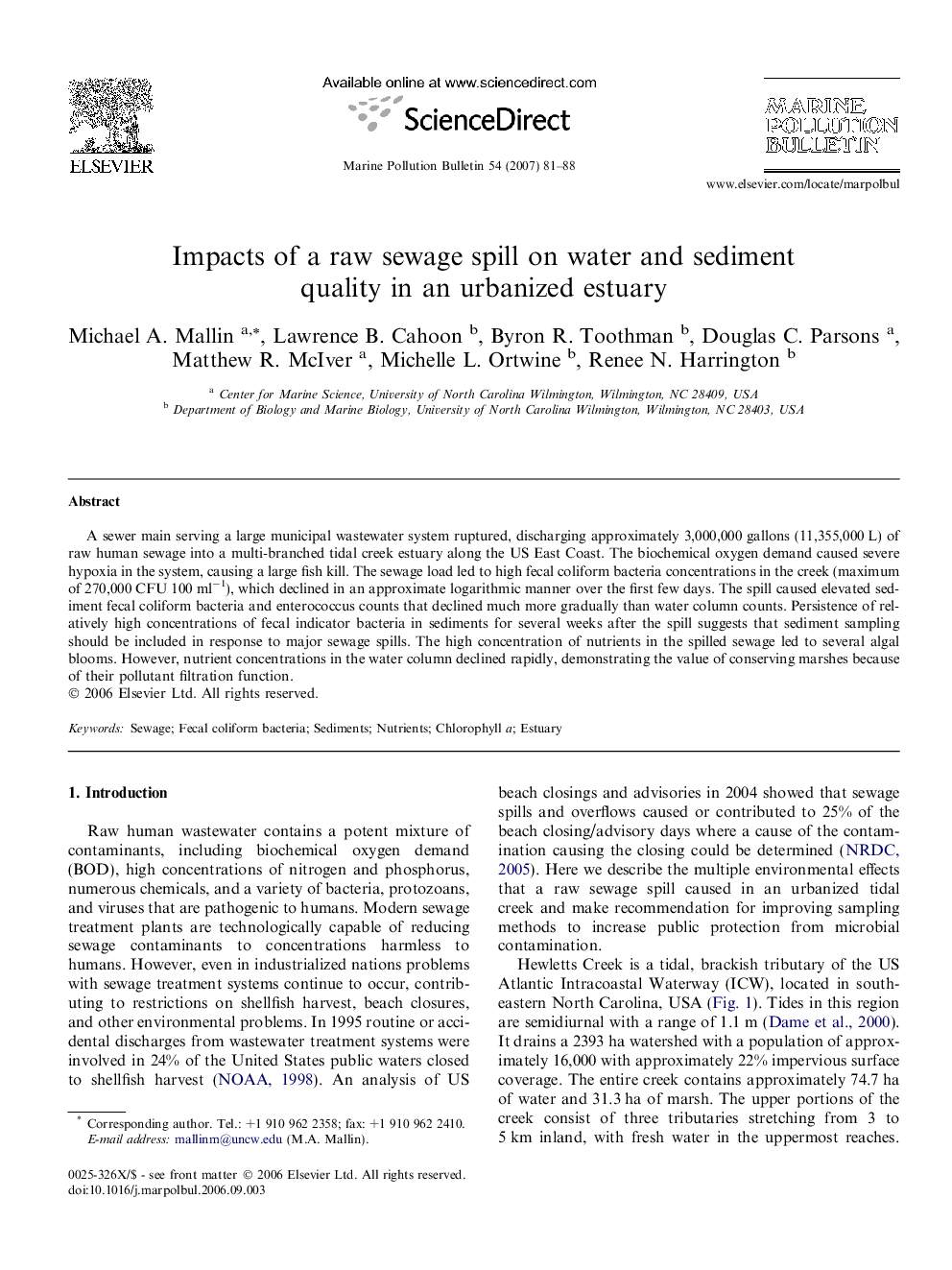| Article ID | Journal | Published Year | Pages | File Type |
|---|---|---|---|---|
| 4477646 | Marine Pollution Bulletin | 2007 | 8 Pages |
A sewer main serving a large municipal wastewater system ruptured, discharging approximately 3,000,000 gallons (11,355,000 L) of raw human sewage into a multi-branched tidal creek estuary along the US East Coast. The biochemical oxygen demand caused severe hypoxia in the system, causing a large fish kill. The sewage load led to high fecal coliform bacteria concentrations in the creek (maximum of 270,000 CFU 100 ml−1), which declined in an approximate logarithmic manner over the first few days. The spill caused elevated sediment fecal coliform bacteria and enterococcus counts that declined much more gradually than water column counts. Persistence of relatively high concentrations of fecal indicator bacteria in sediments for several weeks after the spill suggests that sediment sampling should be included in response to major sewage spills. The high concentration of nutrients in the spilled sewage led to several algal blooms. However, nutrient concentrations in the water column declined rapidly, demonstrating the value of conserving marshes because of their pollutant filtration function.
